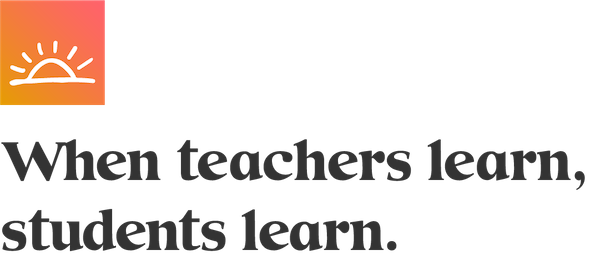Recently I was at teachers' conference where a group of us spent a delightful evening talking about our favorite subject, teaching. Still buzzing with energy from the day's new learning, we shared our notes from the sessions we had attended. I marveled at how we were all struck by a topic that permeated so many of the day's presentations: how teachers can spend their precious time and money to maximize the effect on student learning.

We discussed instructional approaches, varied informative assessments, and a plethora of reading strategies, children's books, and professional books, along with the influence of deep-rooted beliefs and pedagogy on instruction. What was most fascinating was that at no time during the three hours did any person ever talk about a cute bulletin board idea found online. No one suggested a fabulous worksheet they had purchased on a paid teacher site.
In Donalyn Miller's popular article written for the Texas Library Association, she directly addresses this topic when she says, "Pressure to create cute classrooms and library displays worthy of Pinterest boards sets unreasonable expectations for teachers and librarians and diverts resources from developing meaningful teaching practices. Pinterest is not pedagogy." Such powerful and truthful words.
This week I sat with two colleagues discussing and analyzing student assessments and conferring notes taken over the previous few days. We were collaborating on potential instructional approaches to meet the needs of specific students who seemed to be stalled in their reading progress. We also celebrated the growth shown by another student and worked together on ways to adjust his goals and strategies to keep forward momentum. As we huddled around the table, another teacher walked by and remarked how lucky we were to have the time to put our heads together to come up with instructional goals and potential strategies to help these students.
At that moment I thought back to the conference I had attended and the many discussions and sessions about how teachers spend their precious time and money. I couldn't help but be pleased with how this small group was investing its time, focusing on student needs and planning for how to best support students' reading.
Now, whenever I find myself saying there just isn't enough time in the day to get everything done, I stop myself. Instead I ask, "Is what I am doing with my time going to directly engage and benefit students?" Amazingly, I am finding that with this new filter, I have more time than ever before. I certainly didn't find more hours in the day. Instead I use the time I have with one single goal in mind: spending time engaged only in meaningful work that will truly make a difference for kids.
This article might be missing links that were included at the time of publication.

